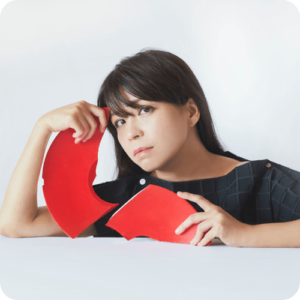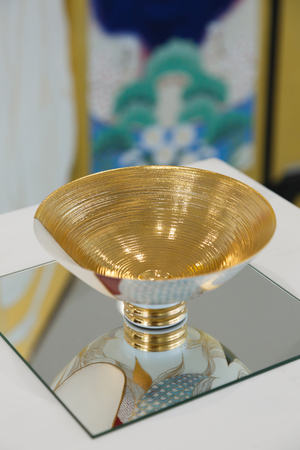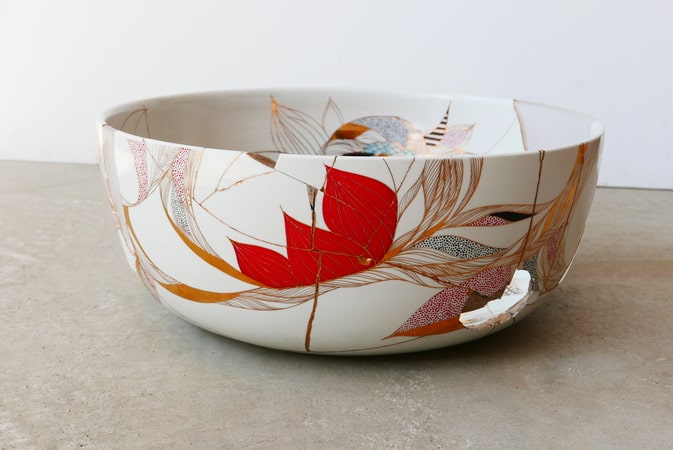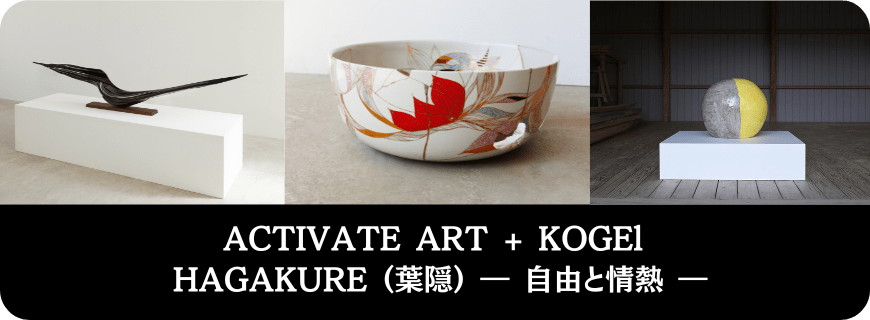
SHOWKO
Born in Kyoto, SHOWKO hails from a family with a 330-year history of producing tea utensils in the region. After training in Takeo, Saga, she began creating ceramic tile paintings at her own studio, “SpringShow Studio,” in 2005.
In addition to working in graphic design and composition, she has explored product development inspired by her experiences in various industries. In 2009, she incorporated her studio and launched the brand *SIONE* the same year. She has held numerous exhibitions across Japan and began international expansion in 2011.
In 2016, SHOWKO renovated a traditional inn near Ginkakuji Temple, establishing a shop that combines a studio and café. That same year, she was selected as the Kyoto representative for the *LEXUS NEW TAKUMI PROJECT*.
After that, she changed her name from Naoko Kawahara to SHOWKO and began focusing more intensely on her art. Starting around 2019, she revisited a technique she had debuted at Milan Salone in 2011—breaking and then repairing vessels with gold lacquer (kintsugi). This act of breaking and mending disrupts the concept of time and invites the viewer to reflect on alternate realities that could have existed in parallel. In 2019, she also created two rooms in a new art hotel in Kyoto, displaying both ceramic tile paintings and kintsugi works.
SHOW-TARO Exhibition (SHOWKO + Taro Yamamoto)
Concept: *Parallel World / Parallel Time*
Concept Explanation:
In content such as manga, anime, and dramas, terms like “time leap,” “reincarnation,” and “alternate timeline” have become common. Parallel worlds drive the narrative, but parallel realities aren’t limited to fiction—our actual world is also constantly parallel.
Although we seem to share the same time and space, each of us lives in a completely different world and time. The book *Hagakure* has been passed down through Japan’s history, but like a character reincarnating in parallel worlds, its meaning has shifted with time. Originally written as a guide for samurai in the Nabeshima domain during the Edo period, it later became a symbol of loyalty and patriotism. After World War II, it was banned as militaristic but was later re-evaluated by Yukio Mishima and others, and today it’s regarded as a business book.
*Hagakure*, like leaves blown by the wind, alternates between hiding and revealing itself, transforming between reality and fiction. In this exhibition inspired by *Hagakure*, the new unit SHOW-TARO presents artworks combining ceramics and painting.
Paintings represent “illusion” (the image), providing only an impression without practical use. In Japan, paintings are given a “body” in the form of folding screens, making the illusion become tangible. Ceramics represent “reality” (the physical), functioning as containers for real objects. However, as they are decorated and age, they begin to hold “stories” that blur the line between reality and illusion.
Like leaves blowing in the wind, flipping between reality and illusion, the world is always parallel. We each live in a different world and time. And yet, when we can share the same view, sound, and feeling, even for a moment, that is when we experience beauty.
Exhibition:
SHOWKO and Taro Yamamoto present numerous works imbued with narrative. Six of Yamamoto’s folding screen paintings will be on display, accompanied by SHOWKO’s ceramic works (or installations), resonating with the stories within Yamamoto’s paintings.



